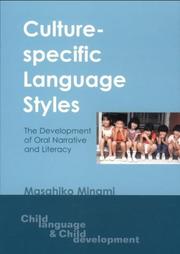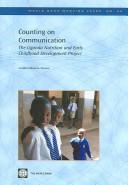| Listing 1 - 10 of 16 | << page >> |
Sort by
|
Book
Abstract | Keywords | Export | Availability | Bookmark
 Loading...
Loading...Choose an application
- Reference Manager
- EndNote
- RefWorks (Direct export to RefWorks)
A recent wave of brain research has advanced our understanding of the neural mechanisms of conscious states, contents and functions. A host of questions remain to be explored, as shown by lively debates between models of higher vs. lower-order aspects of consciousness, as well as global vs. local models. (Baars 2007; Block, 2009; Dennett and Cohen, 2011; Lau and Rosenthal, 2011). Over some twenty-five centuries the contemplative traditions have also developed explicit descriptions and taxonomies of the mind, to interpret experiences that are often reported in contemplative practices (Radhakrishnan & Moore, 1967; Rinbochay & Naper, 1981). These traditional descriptions sometimes converge on current scientific debates, such as the question of conceptual vs. non-conceptual consciousness; reflexivity or “self-knowing” associated with consciousness; the sense of self and consciousness; and aspects of consciousness that are said to continue during sleep. These real or claimed aspects of consciousness have not been fully integrated into scientific models so far. This Research Topic in Consciousness Research aims to provide a forum for theoretical proposals, new empirical findings, integrative literature reviews, and methodological improvements inspired by meditation-based models. We include a broad array of topics, including but not limited to: replicable findings from a variety of systematic mental practices; changes in brain functioning and organization that can be attributed to such practices; their effects on adaptation and neural plasticity; measurable effects on perception, cognition, affect and self-referential processes. We include contributions that address the question of causal attribution. Many published studies are correlational in nature, because of the inherent difficulty of conducting longitudinal experiments based on a major lifestyle decision, such as the decision to commit to a mental practice over a period of years. We also feature clinical and case studies, integrative syntheses and significant opinion articles.
contemplative practice --- structural plasticity --- functional plasticity --- Meditation --- mindfulness --- neural correlates of consciousness --- Cultural issues --- contemplative practice --- structural plasticity --- functional plasticity --- Meditation --- mindfulness --- neural correlates of consciousness --- Cultural issues
Book
Abstract | Keywords | Export | Availability | Bookmark
 Loading...
Loading...Choose an application
- Reference Manager
- EndNote
- RefWorks (Direct export to RefWorks)
A recent wave of brain research has advanced our understanding of the neural mechanisms of conscious states, contents and functions. A host of questions remain to be explored, as shown by lively debates between models of higher vs. lower-order aspects of consciousness, as well as global vs. local models. (Baars 2007; Block, 2009; Dennett and Cohen, 2011; Lau and Rosenthal, 2011). Over some twenty-five centuries the contemplative traditions have also developed explicit descriptions and taxonomies of the mind, to interpret experiences that are often reported in contemplative practices (Radhakrishnan & Moore, 1967; Rinbochay & Naper, 1981). These traditional descriptions sometimes converge on current scientific debates, such as the question of conceptual vs. non-conceptual consciousness; reflexivity or “self-knowing” associated with consciousness; the sense of self and consciousness; and aspects of consciousness that are said to continue during sleep. These real or claimed aspects of consciousness have not been fully integrated into scientific models so far. This Research Topic in Consciousness Research aims to provide a forum for theoretical proposals, new empirical findings, integrative literature reviews, and methodological improvements inspired by meditation-based models. We include a broad array of topics, including but not limited to: replicable findings from a variety of systematic mental practices; changes in brain functioning and organization that can be attributed to such practices; their effects on adaptation and neural plasticity; measurable effects on perception, cognition, affect and self-referential processes. We include contributions that address the question of causal attribution. Many published studies are correlational in nature, because of the inherent difficulty of conducting longitudinal experiments based on a major lifestyle decision, such as the decision to commit to a mental practice over a period of years. We also feature clinical and case studies, integrative syntheses and significant opinion articles.
contemplative practice --- structural plasticity --- functional plasticity --- Meditation --- mindfulness --- neural correlates of consciousness --- Cultural issues
Book
Abstract | Keywords | Export | Availability | Bookmark
 Loading...
Loading...Choose an application
- Reference Manager
- EndNote
- RefWorks (Direct export to RefWorks)
A recent wave of brain research has advanced our understanding of the neural mechanisms of conscious states, contents and functions. A host of questions remain to be explored, as shown by lively debates between models of higher vs. lower-order aspects of consciousness, as well as global vs. local models. (Baars 2007; Block, 2009; Dennett and Cohen, 2011; Lau and Rosenthal, 2011). Over some twenty-five centuries the contemplative traditions have also developed explicit descriptions and taxonomies of the mind, to interpret experiences that are often reported in contemplative practices (Radhakrishnan & Moore, 1967; Rinbochay & Naper, 1981). These traditional descriptions sometimes converge on current scientific debates, such as the question of conceptual vs. non-conceptual consciousness; reflexivity or “self-knowing” associated with consciousness; the sense of self and consciousness; and aspects of consciousness that are said to continue during sleep. These real or claimed aspects of consciousness have not been fully integrated into scientific models so far. This Research Topic in Consciousness Research aims to provide a forum for theoretical proposals, new empirical findings, integrative literature reviews, and methodological improvements inspired by meditation-based models. We include a broad array of topics, including but not limited to: replicable findings from a variety of systematic mental practices; changes in brain functioning and organization that can be attributed to such practices; their effects on adaptation and neural plasticity; measurable effects on perception, cognition, affect and self-referential processes. We include contributions that address the question of causal attribution. Many published studies are correlational in nature, because of the inherent difficulty of conducting longitudinal experiments based on a major lifestyle decision, such as the decision to commit to a mental practice over a period of years. We also feature clinical and case studies, integrative syntheses and significant opinion articles.
contemplative practice --- structural plasticity --- functional plasticity --- Meditation --- mindfulness --- neural correlates of consciousness --- Cultural issues
Book
Year: 2014 Publisher: Washington, D.C., The World Bank,
Abstract | Keywords | Export | Availability | Bookmark
 Loading...
Loading...Choose an application
- Reference Manager
- EndNote
- RefWorks (Direct export to RefWorks)
Whether in the domains of scholarship or practice, important advances have been made in recent years in our understanding of how culture, politics, and development interact. Today's leading theorists of culture and development represent a fourth distinctive perspective vis-a-vis their predecessors, one that seeks to provide an empirically grounded, mechanisms-based account of how symbols, frames, identities, and narratives are deployed as part of a broader repertoire of cultural "tools" connecting structure and agency. A central virtue of this approach is less the broad policy prescriptions to which it gives rise-indeed, to offer such prescriptions would be something of a contradiction in terms-than the emphasis it places on making intensive and extensive commitments to engaging with the idiosyncrasies of local contexts. Deep knowledge of contextual realities can contribute constructively to development policy by enabling careful intra-country comparisons to be made of the conditions under which variable responses to otherwise similar problems emerge. Such knowledge is also important for discerning the generalizability (or "external validity") of claims regarding the efficacy of development interventions, especially those overtly engaging with social, legal, and political issues.
Anthropology --- Cultural Heritage & Preservation --- Cultural Issues --- Cultural Policy --- Culture & Development --- Ethnicity --- Ict Policy And Strategies --- Identity --- Information and Communication Technologies --- Political Development --- Race in Society --- Social Development
Book
Year: 2014 Publisher: Washington, D.C., The World Bank,
Abstract | Keywords | Export | Availability | Bookmark
 Loading...
Loading...Choose an application
- Reference Manager
- EndNote
- RefWorks (Direct export to RefWorks)
This paper considers the possibility of collective action by the business community to counter corruption in the award of government licenses and contracts. The analogy is with contract enforcement institutions studied by economic historians and contract law scholars. The institution in this context comprises a no-bribery norm, a community system to detect violations, and a multilateral ostracism penalty upon conviction in a community tribunal. The requirements such an institution must meet if it is to be effective are analyzed. It is shown that an institution of sufficient quality-combining probability of correct detection and severity of punishment-can eliminate bribery. If the private institution is not sufficiently good, then in conjunction with the state's formal apparatus it reduces the level of bribes demanded, but increases the probability of winning the license or contract through bribery. An improvement in the government's formal anti-corruption mechanism, holding the private institution constant, reduces both the level of bribes and the probability of success through bribery. The two institutions together are shown to achieve substantially better outcomes than either can on its own.
Anticorruption --- Business Community --- Corruption & Anticorruption Law --- Crime and Society --- Cultural Issues --- E-Business --- Law and Development --- Multilateral Ostracism Penalty --- Private Sector Development --- Public Sector Corruption and Anticorruption Measure --- Public Sector Development --- Social Accountability --- Social Development

ISBN: 0520928326 0585466246 9780520928329 9780585466248 0520228243 9780520228245 0520232720 9780520232723 Year: 2002 Publisher: Berkeley University of California Press
Abstract | Keywords | Export | Availability | Bookmark
 Loading...
Loading...Choose an application
- Reference Manager
- EndNote
- RefWorks (Direct export to RefWorks)
Lawrence Kramer has been a pivotal figure in the development of the controversial new musicology, integrating the study of music with social and cultural issues. This accessible and eloquently written book continues and deepens the trajectory of Kramer's thinking as it boldly argues that humanistic, not just technical, meaning is a basic force in music history and an indispensable factor in how, where, and when music is heard. Kramer draws on a broad range of music and theory to show that the problem of musical meaning is not just an intellectual puzzle, but a musical phenomenon in its own right. How have romantic narratives involving Beethoven's "Moonlight" Sonata affected how we hear this famous piece, and what do they reveal about its music? How does John Coltrane's African American identity affect the way we hear him perform a relatively "white" pop standard like "My Favorite Things"? Why does music requiring great virtuosity have different cultural meanings than music that is not particularly virtuosic? Focusing on the classical repertoire from Beethoven to Shostakovich and also discussing jazz, popular music, and film and television music, Musical Meaning uncovers the historical importance of asking about meaning in the lived experience of musical works, styles, and performances. Kramer's writing, clear and full of memorable formulations, demonstrates that thinking about music can become a vital means of thinking about general questions of meaning, subjectivity, and value. In addition to providing theoretical advances and insights on particular pieces and repertoires, Musical Meaning will be provocative reading for those interested in issues of identity, gender, and cultural theory. This book includes a CD of Kramer's own composition, Revenants: 32 Variations in C Minor, which he discusses in his final chapter.
Music --- Music, Influence of. --- Subjectivity in music. --- Music, Effect of --- Hermeneutics (Music) --- Musical aesthetics --- Aesthetics --- Music theory --- Criticism --- History and criticism. --- Philosophy and aesthetics. --- Philosophy --- academic. --- accessible. --- beethoven. --- composers. --- cultural history. --- cultural issues. --- cultural theory. --- easy to understand. --- famous composer. --- gender studies. --- humanist. --- humanistic. --- identity. --- moonlight sonata. --- music culture. --- music history. --- music performance. --- musical composition. --- musical genres. --- musicology. --- scholarly. --- social history. --- social issues.

ISBN: 1280827777 9786610827770 1853595756 9781853595752 1853595748 185359573X 9781853595745 9781853595738 9781280827778 661082777X Year: 2002 Volume: 1 Publisher: Bristol Blue Ridge Summit
Abstract | Keywords | Export | Availability | Bookmark
 Loading...
Loading...Choose an application
- Reference Manager
- EndNote
- RefWorks (Direct export to RefWorks)
Communication skills are considered extremely important for the development, preservation, and transmission of culture to future generations, and incorporate the complicated relationship between language and culture. This book focuses on an analysis of personal narratives by Japanese pre-school children. The book also analyzes mother-child narratives and joint book-reading activities.
Language and culture --- Children --- Japanese language --- Koguryo language --- Childhood --- Kids (Children) --- Pedology (Child study) --- Youngsters --- Age groups --- Families --- Life cycle, Human --- Language --- Acquisition. --- Language acquisition --- Discourse analysis, Narrative --- Mother and child --- Literacy --- Acquisition --- Culture --- Japanese language - Acquisition --- Communication skills. --- Cross-cultural issues. --- Cross-cultural understanding. --- Interactional sociolinguistics. --- Japanese. --- Literacy. --- Mother-child narratives. --- Narrative development. --- Narrative discourse skills. --- Personal narratives.
Periodical
ISSN: 27170896 27171019 Year: 1390 Publisher: Najafʼābād : Dānishgāh-i Āzād-i Islāmī, Vāḥid-i Najafʼābād,
Abstract | Keywords | Export | Availability | Bookmark
 Loading...
Loading...Choose an application
- Reference Manager
- EndNote
- RefWorks (Direct export to RefWorks)
cultural issues in lyrical works --- studies of folklore in lyrical works --- background of lyrical literature --- critical analysis of lyrical poem --- critical analysis of lyrical prose works --- lyrical literature in the field of children's and adolescents' works --- Persian language --- Persian literature --- Farsi language --- Iranian languages
Book
ISBN: 0520908317 Year: 1988 Publisher: Berkeley, California : University of California Press,
Abstract | Keywords | Export | Availability | Bookmark
 Loading...
Loading...Choose an application
- Reference Manager
- EndNote
- RefWorks (Direct export to RefWorks)
A Companion to Piers Plowman is the first comprehensive guide to William Langland's fourteenth-century masterpiece. Until now no single volume has discussed the broad range of issues raised here, nor have previous studies drawn on such an internationally distinguished group of Langland scholars.
Christian poetry, English (Middle) --- History and criticism. --- 14th century. --- british literature. --- christian literature. --- classic literature. --- comprehensive guide. --- contemporary scholarship. --- critical guide. --- cultural issues. --- english literature. --- european. --- langland scholars. --- lit reference. --- literary criticism. --- literary critics. --- literary masterpiece. --- literary scholars. --- literary studies. --- medieval literature. --- nonfiction reference. --- piers plowman. --- reading companion. --- social issues. --- western literature. --- william langland.

ISBN: 0821362682 0821362690 9780821362686 9786610168880 1280168889 Year: 2005 Publisher: Washington, D.C. : World Bank,
Abstract | Keywords | Export | Availability | Bookmark
 Loading...
Loading...Choose an application
- Reference Manager
- EndNote
- RefWorks (Direct export to RefWorks)
The Uganda Nutrition and Early Childhood Development Project was one of the World Bank's first projects to demonstrate the value-added of strategic communication. The strategic communication component developed for this project included the use of formative research about values and attitudes with respect to child rearing, in order to develop and test effective messages. The communication strategy was developed in a highly participatory manner and included nurturing a team of champions for the project among policymakers, district officials, community leaders, and grassroots organizations to advocate for the project. It also included two-way communication activities developed to address the practices and behaviors that would need to be changed in order for the project to be successful, rather than merely disseminating messages based on assumptions of project benefits.
Zonder onderwerpscode: wereldeconomie, ontwikkelingsproblematiek --- Health promotion --- Malnutrition in children --- Economic assistance --- Health, Nutrition, and Population. --- Social and Cultural Issues. --- Prevention. --- Economic aid --- Foreign aid program --- Foreign assistance --- Grants-in-aid, International --- International economic assistance --- International grants-in-aid --- Economic policy --- International economic relations --- Conditionality (International relations) --- Children --- Nutrition disorders in children --- Health promotion programs --- Health promotion services --- Promotion of health --- Wellness programs --- Preventive health services --- Health education --- Nutrition
| Listing 1 - 10 of 16 | << page >> |
Sort by
|

 Search
Search Feedback
Feedback About UniCat
About UniCat  Help
Help News
News